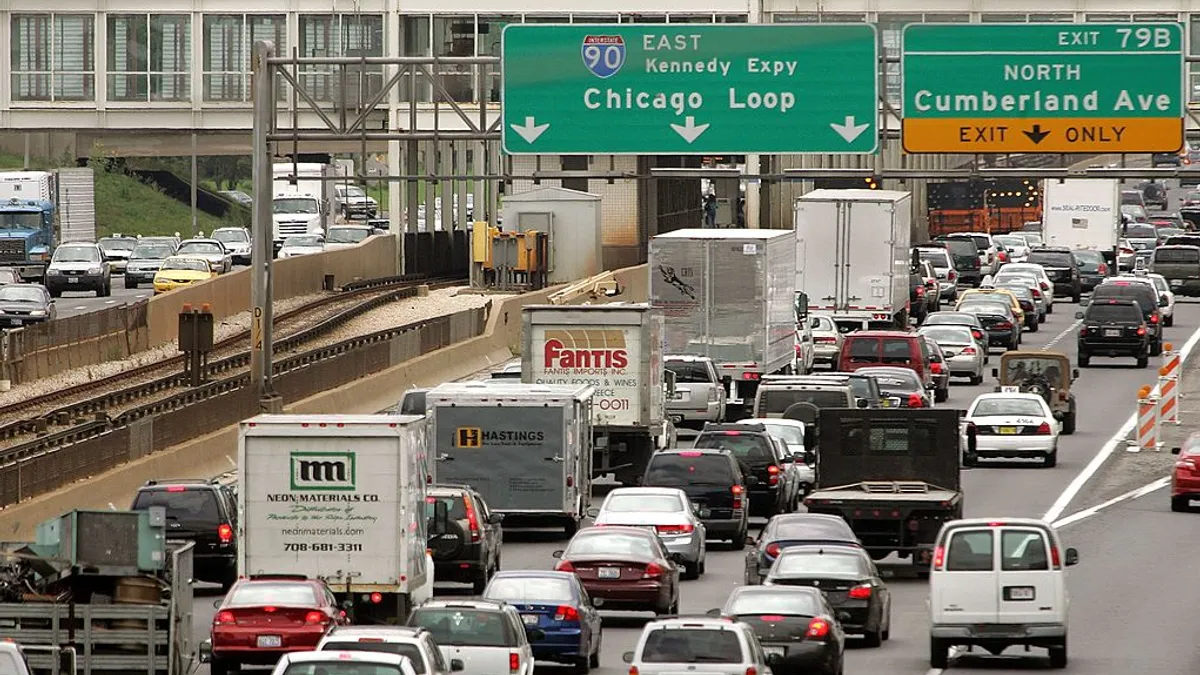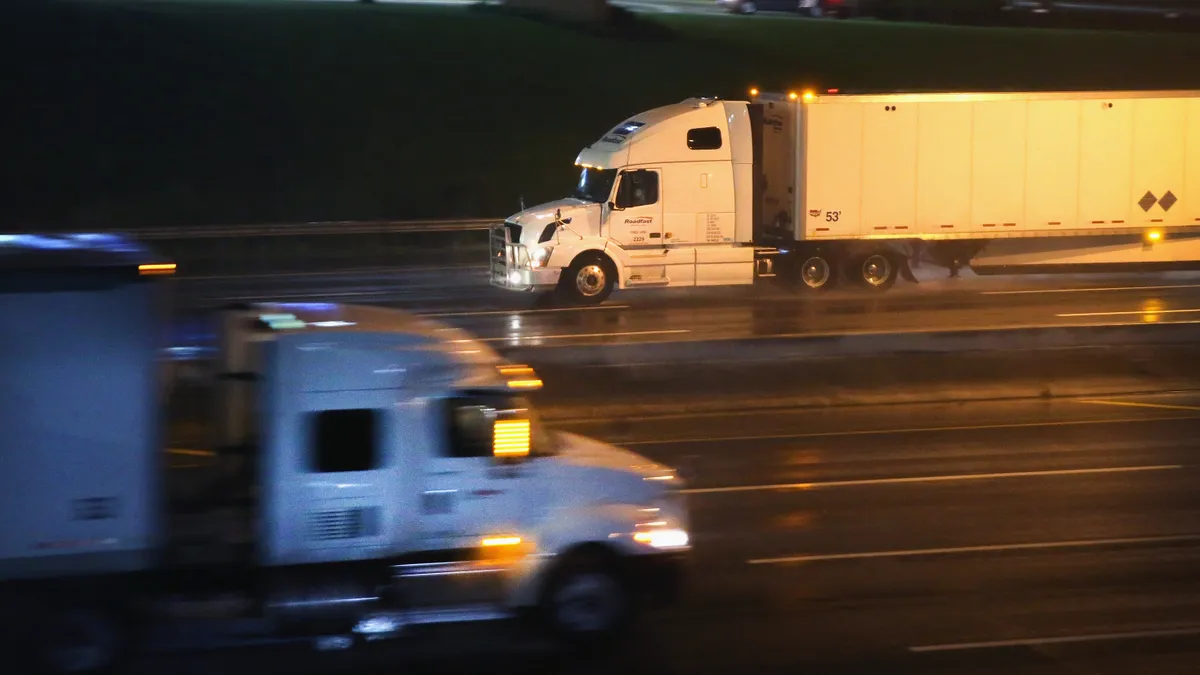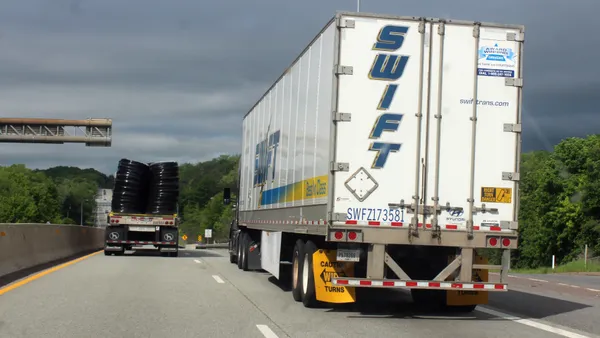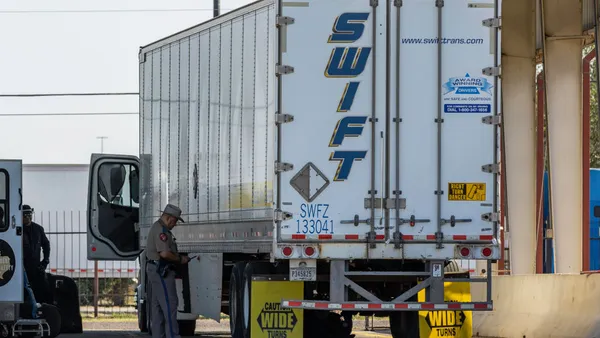Dive Brief:
- The reconstructed Jane Byrne Interchange in Chicago, which reopened in December 2022, has increased truck speeds by nearly 25% at the three-time top traffic bottleneck in the country, according to the American Transportation Research Institute.
- Reconstruction of the interchange — at Interstate 290 at I-90/I-94 — began in 2013, adding lanes and reducing traffic merges, ATRI noted in an analysis.
- Fort Lee, New Jersey, where traffic waits at the George Washington Bridge to New York, and Chicago’s I-294 at I-290/I-88 remained in the first- and second-place spots in the list of the worst U.S. traffic headaches. Fort Lee has held the crown for seven straight years.
Mapping the country's top 10 truck bottlenecks
The top 10 biggest truck bottlenecks
| Highway interchange | City and state |
|---|---|
| 1. I-95 and SR 4 | Fort Lee, New Jersey |
| 2. I-294 at I-290/I-88 | Chicago, Illinois |
| 3. I-45 at I-69/US 59 | Houston, Texas |
| 4. I-285 at I-85 (North) | Atlanta, Georgia |
| 5. I-24/I-40 at I-440 (East) | Nashville, Tennessee |
| 6. I-75 at I-285 (North) | Atlanta, Georgia |
| 7. SR 60 at SR 57 | Los Angeles, California |
| 8. I-71 at I-75 | Cincinnati, Ohio |
| 9. I-10 at I-45 | Houston, Texas |
| 10. I-20 at I-285 (West) | Atlanta, Georgia |
Source: ATRI
Dive Insight:
The Jane Byrne Interchange fell to No. 15 in this year’s rankings after being ranked the top 10 worst in the U.S. as recently as 2023. It fell to No. 13 last year.
It is unrealistic to assume that reconstructing a bottleneck can eliminate traffic congestion, ATRI acknowledged in an analysis of the improved Illinois interchange. But the American Trucking Associations’ research arm said the project boosted average rush-hour truck speeds from 22 mph before construction to 27 mph after reopening.
While average rush-hour truck speeds slowed 3% from last year at the top 10 traffic bottlenecks, the Byrne Interchange shows the benefits of expanding capacity of constrained freight corridors, ATRI President and COO Rebecca Brewster said in last week's announcement of the 2025 rankings.
“This data gives policymakers a road map to reduce chokepoints, lower emissions, and drive economic growth,” Brewster said.
ATRI’s data revealed, however, that the $806 million reconstruction project hasn’t yet made quite the dent in the Windy City’s traffic that Illinois Gov. JB Pritzker predicted when announcing its reopening.
The rebuilt three-level bridge, previously known as the Circle Interchange, was anticipated to reduce delays by 50%, cut vehicle emissions by one-third and decrease crashes by 25%, according to an Illinois Department of Transportation news release on Dec. 14, 2022.
Built in 1958 and later named after a former Chicago mayor and the first woman elected to lead a major American city, the interchange serves almost 400,000 vehicles a day — a quarter of those being trucks, the release said.













